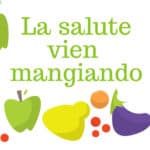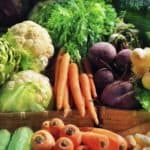 A correct diet that keeps us fit and healthy starts with the choice of foods to put into the shopping cart. .
A correct diet that keeps us fit and healthy starts with the choice of foods to put into the shopping cart. .
Compiling a shopping list and the choice of groceries to buy are actions that require a choice responsibility and should not be guided by deviant or case-by-case advertising.
The vision of Ayurveda
Charaka, the founder of Ayurveda, wrote about 3000 years ago that those who cook are responsible for the family’s health. The daily diet and the correct preparation play a crucial role in our state of health.
According to Ayurveda, the choice of foods must be guided by seasonality. In winter, it would be better not to eat the same foods we eat in the summer. When the weather is hot we should be directed towards foods that are refreshing thanks to their intrinsic nature.
The basics for correct grocery shopping are:
- Avoid shopping for groceries at an empty stomach, because impulsive and unnecessary purchases prevail;
• at the supermarket prefer shopping for fresh fruit and vegetables, then for bread, meat and fish.
• If it is not necessary, avoid entering in the interior aisles where snacks, ready meals and snacks are on display.
We must be conscious that there is a marketing strategy in the way the products are displayed on the shelves to entice the customer to make unprogrammed purchases.
 How do you know what you really need?
How do you know what you really need?
First of all, avoid going shopping without a list!
Depending on your needs and your family’s needs, prepare one that you will update weekly depending on necessities.
In this way, you will purchase consciously, without being persuaded by the cravings of the moment and the marketing techniques.
Some tips for a list of healthy spending
1. Start with fruit and fresh vegetables. It is important that they are varied, abundant and seasonally, preferably local produce. These are more tasty, richer in vitamins and minerals, and cheaper.
2. Then go over to the choice of cereals, not only of bread and pasta (better if made of antique Italian hard wheat because it is rich in protein and with little gluten) but also of grains of rice, barley, spelled, buckwheat, polenta, oats, etc … They are all rich in complex starch-sugar, have a good protein content but differ in fiber, minerals and vitamins.
3. For protein sources, you buy fresh legumes in the fruit and vegetable department, or beans, lentils, chick peas, cicerola, peas, dried soya, which are rich in protein and cholesterol-free.
4. Other sources of protein are eggs, fish, and meat. Consume the latter two parsimony as they are difficult to digest and come from intensive breeding that causes environmental alterations and high energyconsumption.
5. Another protein source, but also of lipids, sugars, vitamins and mineral salts is the whole cow’s milk or goat’s milk. Avoid buying long-preserved milk, partially skimmed or light. They do not provide proper nourishment, and in proportion to what they offer, they are very expensive.
6. Drastically restricts the purchase of cheeses and prevents the yogurt which, according to Ayurveda, creates a very mucous, base for getting sick more easily.
7. In the list enter breakfast products: sliced cakes, cereals, biscuits (best dried, cream-free and chocolate) and dried fruits (dried figs, apricots, plums, dates).
8. Do not forget about oilseeds (almonds, sesame, sunflower, pumpkin), unleavened foods that you can eat at breakfast, lunch and dinner.
9. Various and possible can be included in the list but in moderate quantities, such as ice cream or snacks.
10. Carefully avoid all frozen foods, pre-cooked and ready-to-use foods, envelopes and cans.
At checkout, check out your shopping cart.
If fruits and vegetables, grain cereals and legumes predominate, you have done a good job, if you have the best cheeses, cheeses, yoghurts, industrial products, french fries and sugary drinks, try to reflect on the choices you have made and try to improve the your work.


